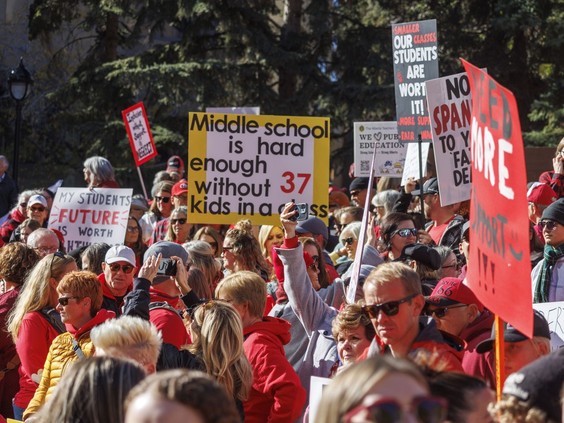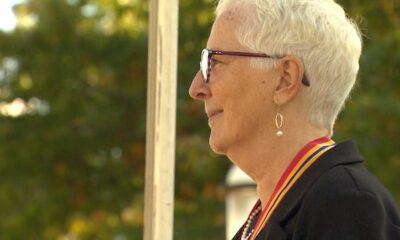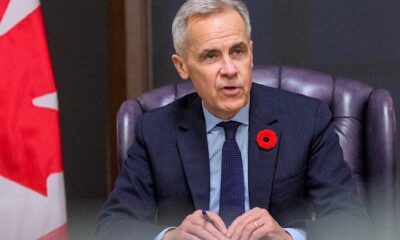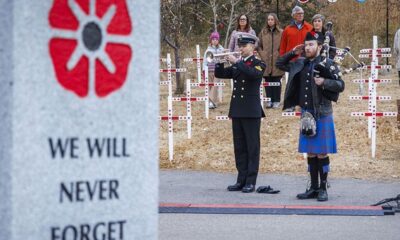Politics
Canadians Yearn for Normalcy Amid Strikes and Symbolic Controversies

Recent comments from American commentator George H. Brookman highlight a growing sentiment among Canadians: a desire for normalcy in daily life. This yearning emerged prominently following a series of commemorative events honoring Canadians who lost their lives in war. Amidst this reflective atmosphere, a judge in New Brunswick ignited controversy by asking a lawyer to remove his poppy, a symbol of remembrance and freedom. Such actions, according to Brookman, seem to undermine the very essence of what many Canadians consider normal.
Controversy Surrounds Symbol of Remembrance
The request to remove the poppy sparked outrage among citizens, many of whom view the flower as a vital emblem of sacrifice and liberty. While there may be legal or technical justifications for the judge’s ruling, the emotional impact resonates deeply in a country that values its history of service members.
Brookman recalls a time when annual changes to license plates stirred debates primarily over color choices, not political statements. Yet, recent trends have seen political slogans appearing on provincial license plates, raising questions about the appropriateness of such actions. “Is it normal to put a political party’s slogan on provincial license plates?” Brookman asks. This shift towards politicization appears to exacerbate divisions rather than foster unity or normalcy.
Educational and Health System Struggles
As the nation grapples with these symbolic issues, the realities of the education and healthcare systems present more pressing challenges. In 2025, teachers are striking for better conditions, and nurses are threatening similar actions. Brookman draws a parallel to his own high school experience in 1964, when a simple warning from a gym teacher swiftly ended a student protest. “Why do we have teachers striking for weeks and nurses threatening to strike?” he questions, suggesting that the situation today is far from normal.
Discussions around immigration, planning, and budgeting often dominate the conversation. However, the crux of the problem is evident: classrooms are overcrowded and increasingly filled with students who require additional support. The educational landscape is strained, with some schools utilizing gymnasiums as makeshift classrooms. In the healthcare sector, patients are frequently found in waiting areas or hallways due to a lack of available space.
In a broader societal context, the visible presence of homelessness on the streets further underscores the urgency of these issues. Brookman emphasizes that the time has come to move beyond ideological debates and focus on establishing normal standards that serve all citizens.
Teachers and nurses are not at fault for advocating for better conditions; rather, the responsibility lies with governments to manage available resources effectively. As Brookman notes, “Solutions must be found; that should be priority No. 1.” The call for normalcy is not merely an abstract notion; it reflects a collective desperation for a return to fundamental standards of living and working.
As Canadians navigate these multifaceted issues, the need for constructive dialogue and action has never been clearer. The desire for normalcy is a call to address the underlying challenges that affect daily life, ensuring that symbols of remembrance and commitment to community are honored and preserved.
-

 Politics1 week ago
Politics1 week agoSecwepemc First Nation Seeks Aboriginal Title Over Kamloops Area
-

 World4 months ago
World4 months agoScientists Unearth Ancient Antarctic Ice to Unlock Climate Secrets
-

 Entertainment4 months ago
Entertainment4 months agoTrump and McCormick to Announce $70 Billion Energy Investments
-

 Lifestyle4 months ago
Lifestyle4 months agoTransLink Launches Food Truck Program to Boost Revenue in Vancouver
-

 Science4 months ago
Science4 months agoFour Astronauts Return to Earth After International Space Station Mission
-

 Technology3 months ago
Technology3 months agoApple Notes Enhances Functionality with Markdown Support in macOS 26
-

 Top Stories1 month ago
Top Stories1 month agoUrgent Update: Fatal Crash on Highway 99 Claims Life of Pitt Meadows Man
-

 Sports4 months ago
Sports4 months agoSearch Underway for Missing Hunter Amid Hokkaido Bear Emergency
-

 Politics3 months ago
Politics3 months agoUkrainian Tennis Star Elina Svitolina Faces Death Threats Online
-

 Politics4 months ago
Politics4 months agoCarney Engages First Nations Leaders at Development Law Summit
-

 Technology4 months ago
Technology4 months agoFrosthaven Launches Early Access on July 31, 2025
-

 Top Stories3 weeks ago
Top Stories3 weeks agoFamily Remembers Beverley Rowbotham 25 Years After Murder





















